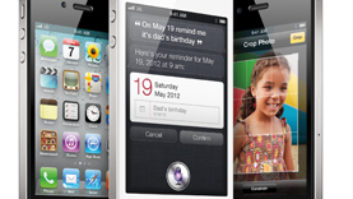Overland Park, Kan. – Sprint’s wireless operating losses grew in the fourth quarter and 2012.
Churn remained “elevated,” and the wireless subscriber base shrank for the second consecutive quarter even as the carrier’s iPhone sales accelerated in the quarter, the company’s financial report shows.
The two quarters of subscriber-base shrinkage followed seven consecutive growth quarters, enabling the company to expand its subscriber base to 55.6 million at the end of 2012, up from a year-ago 55 million. The number of full-year net new subscriber, however, fell to 605,000 from a year-ago 5.1 million.
Shrinkage in the subscriber base will continue in the first half of 2013 before the subscriber base expands again in the second half for multiple temporary reasons, the company said. They include the second-quarter shutdown of the 2G 800MHz Nextel network, elevated churn resulting from network disruptions as the company improves the Sprint CDMA/LTE network, and an expected decline in the number of low-income subscribers who receive cellular subsidies from the federal government.
To help regain lost subscriber momentum, the company plans in the second half to redirect its advertising spending to targeting consumers at large rather than recapturing as many Nextel subscribers as possible to the Sprint network, said CEO Dan Hesse.
Sprint has completed its “recovery phase” in growing revenue, cutting costs, and conserving capital to embark on network improvement, Hesse added. The carrier is now in the first half of a 2012-2013 investment phase to spend to improve the network, he said. The planned $8 billion investment by Softbank will make the network more competitive and “accelerate the turnaround,” he added.
Sprint’s iPhone sales in the quarter grew to 2.2 million from 1.8 million in the year-ago quarter and 1.5 million in each of the other three quarters in 2012. The iPhone first became available on the Sprint network in mid-October 2011.
Sprint’s annual iPhone activations came to 6.6 million, with 40 percent of activating customers new to the Sprint network, representing a higher percentage than other major iPhone carriers, the company said.
Sprint’s iPhone activations for the quarter and year, however, were behind Verizon’s (6.2 million) and AT&T’s (8.6 million).
Overall, 89 percent of fourth-quarter postpaid Sprint-network activations were smartphones. Handset subsidies came to $2 billion in the quarter, up by $262 million compared to the year-ago period.
Sprint’s wireless subscriber base shrank for the second consecutive quarter after seven consecutive quarters of subscriber gains, with the subscriber losses in both quarters attributable to the carrier winding down its Nextel network, recapturing only 55 percent of Nextel subscribers who lost service to the Sprint network in 2012, and gaining far fewer net new Sprint-network subscribers in the quarter and year.
Another reason is “elevated” levels of churn, which will remain elevated for the next few quarters, because of temporary disruptions caused by upgrading the network., said CFO Joseph Euteneuer.
In the quarter, the carrier gained 683,000 prepaid and postpaid subscribers on its Sprint network, down from a year-ago 2.39 million, and lost 1.02 million subscribers on its Nextel network, up from the year-ago 770,000.
For the year, Sprint lost 4.16 million Nextel subscribers, up from the previous year’s 3.16 million loss, and the Sprint network gained 4.77 million subscribers, down from 2011’s 8.27 million.
Operating losses rose in the fourth quarter and full year by 51.6 percent to $758 million and by 705 percent to $2.1 billion, respectively, because of the cost of closing down the 2G Nextel network, improving the Sprint network, and building out 4G LTE over the Sprint network.
Last year marked the fifth consecutive year of losses for the carrier, whose losses ranged from $256 million in 2011 to $2.8 billion in 2008.
Wireless revenues nonetheless grew in the quarter and full year by 4.5 percent to $8.3 billion and by 6.7 percent to $32.3 billion as a result of Sprint-network ARPU reaching its highest levels ever in the quarter, the company said. Sprint postpaid ARPU hit $63.04 in the quarter and $63.05 for the year, with Sprint prepaid ARPU hitting $26.30 in the quarter from a year-ago $25.16.
Combined Sprint and Nextel ARPU rose to $61.47 in the quarter from a year-ago $58.59 and for the year to $60.84 from $57.27. However, combined prepaid ARPU was almost flat for the quarter and down slightly for the year to $26.72 from $27.40.
In other matters, Spring executives said:
- Sprint will complete the shut-down of its 800MHz 2G Nextel network in the second quarter to eliminate the expense of operating a completely separate network, thus improving financial performance.
- It is behind schedule in upgrading its network and adding 4G LTE but is “working hard to catch up,” Hesse said. The planned cash infusion this year from Softbank will speed up the build out, said Steve Elfman, president of network operations and wholesale.
- Sprint “is not currently contemplating” price hikes this year and wouldn’t consider them until its network performance improves, said Hesse.
- There are plans to deal with T-Mobile’s decision to offer the iPhone, Hesse said while declining to disclose details.
- Sprint “can move quickly if needed” to offer a program like T-Mobile’s in which consumers buy no-subsidy smartphones and pay off the phone in installments, Hesse said.
In outlining LTE expansion plans, the Elfman said he expects the company to offer LTE service to a population of 200 million people by the end of 2013 or very early in 2014. The company has already begun to add CDMA voice service in Nextel’s 800MHz spectrum and will launch LTE service in Nextel’s 800MHz band in the fourth quarter, sooner than a previously announced early 2014.








